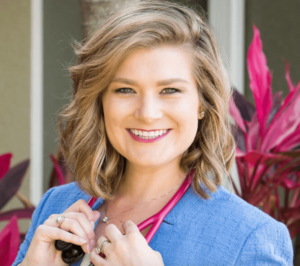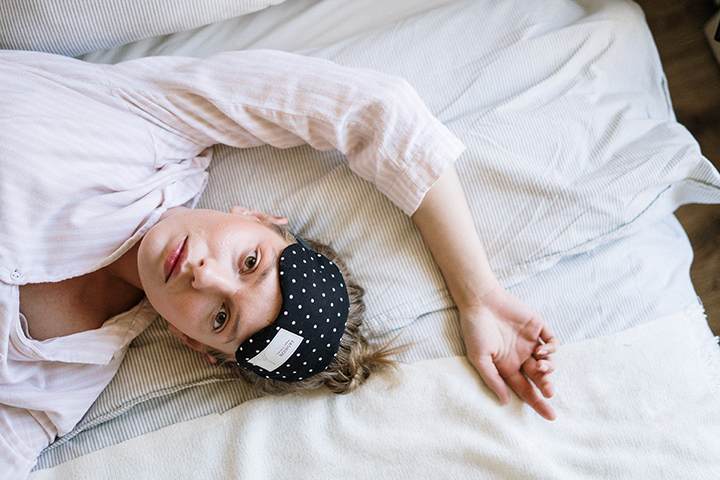For nearly 70 million Americans, getting a good night sleep is a pipe dream (or perhaps more accurately, a nightmare). According to the American Sleep Association, insomnia is the most common sleep disorder with 30 percent of adults experiencing short-term insomnia and 10 percent of adults suffering from long-lasting insomnia.
The criteria for diagnosis are difficulty falling asleep, difficulty staying asleep, or early awakening despite the opportunity for sleep, and symptoms are associated with impaired daytime functioning, and occur at least three times per week for at least one month.
Americans in 2016 spent an estimated $41 billion on sleep aids and remedies (and that number has continued to grow), according to Consumer Reports. Sleeping pills treat insomnia by making you feel drowsy and relaxed. Sleep aids, including natural ones like melatonin, can cause side effects including feeling confused or sleepy during the day.
So what can you do to treat insomnia without pharmaceuticals? The American Academy of Family Physicians (AAFP) has published a series of recommendations, which we will be exploring in our Sleep Series on the Whole Life Primary Care blog. Dr. Talton will add her own favorite tips to this list.
First, understand that insomnia is a complex problem that can result from many different underlying conditions like movement disorders, breathing disorders, heart disease, psychological disorders and others. Underlying conditions should be identified and treated first – although their treatment may not resolve the insomnia.
Keeping a sleep diary can give you a more complete picture of causation and help guide treatment. In your diary, note factors such as:
- Bedtime
- Rise time
- Estimated time to fall asleep
- Estimated number of awakenings
- Number of naps during the day
- Number of alcoholic drinks (and times) *this is everybody’s least favorite reality, but alcohol before bed might help you fall asleep but makes it more difficult to stay asleep, as well as affecting the quality of your sleep. Give yourself a trial of no alcohol for 1-2 weeks to determine if your sleep Is overall better without it
- Stresses of the day
- Irritability level
Here is a free sleep diary template from Dalhousie University.
The AAFP recommends starting with sleep hygiene therapy as an initial intervention for all adults with insomnia, so that personal habits and environmental factors that negatively impact sleep can be identified and corrected. Here is a free printable sleep hygiene checklist.
Sleep Hygiene Therapy Techniques:
1. Exercise regularly (but not within four hours of bedtime). The Sleep Foundation recommends aerobic exercises like brisk walking, water aerobics, and semi-hilly bike rides as well as resistance exercises like lifting weights, workouts using resistance bands and pushups/situps, and yoga.
2. Avoid large meals and limit fluid intake in the evenings
3. Limit caffeine, tobacco and alcohol intake
4. Use the bedroom for sleep and sex only
5. Maintain a regular sleep-wake cycle without daytime napping
6. Avoid distracting stimuli at bedtime including loud noises, bright lights and extreme temperature variations.
If establishing and maintaining a regular sleep cycle (#5 above) is problematic, the AAFP recommends implementing Stimulus Control Therapy using the techniques noted below.
7. Lie down to sleep only when feeling sleepy
8. Avoid wakeful activities at bedtime (e.g., watching television, talking on the phone, eating)
9. Avoid screens for 1-2 hours prior to bedtime. The quality of light from television, phone and computer screens tells your brain its daytime. Some phones, like the iPhone, have a blue light filter to specifically avoid this effect in the evening hours. The best thing to do is avoid the screens altogether
10. Leave the bed if unable to fall asleep within 20 minutes and return when sleepy. However, avoid doing something in this timeframe that triggers wakefulness like eating, drinking, screens, or bright lights.
11. Set the alarm for the same time each morning regardless of how much sleep occurs during the night
Dr. Talton’s Favorite Tips
12. Get rid of your bedside alarm and/or avoid looking at the clock. The obsession with how much sleep you’re NOT getting is distracting and anxiety provoking.
13. Keep a pen and pad near your bed. If you have a habit of thinking of things to do before bed, write them down so you can “let it go”. Don’t turn it into a list-making marathon, however.
14. Think of a few “safe topics” for your brain to focus on as you fall asleep. Typically, the things you need to accomplish the next day, replaying conversations, difficult personal problems, things that cause you worry should NOT be on this list. Counting sheep?
15. Melatonin can be used to help reset a faulty internal clock. Start by taking a small dose (higher doses are not more effective) 30 min prior to your desired sleep time. Then, get into sleep mode with all the tips listed above.
17. Over-the-counter sleep aids can be psychologically addictive, but ALL SLEEP MEDICATION can be psychologically addictive, so prescriptions are not necessarily better.
ALL sleep aids affect the quality of your sleep, so natural sleep is always best.
Future posts in this Sleep Series will be devoted to additional Insomnia treatments recommended by the AAFP as well as exclusive tips from Dr. Talton.
Until then, we’d love to hear which interventions have worked for you! Please share them in the comments below.
References: https://my.clevelandclinic.org/health/drugs/15308-sleeping-pills
https://www.consumerreports.org/sleep/why-americans-cant-sleep/
American Academy of Family Physicians (www.aafp.org/afp)
https://www.sleepfoundation.org/physical-activity/best-exercises-sleep


